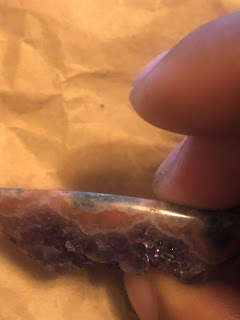
This course will explore a wave of cultural, technological, and social issues rippling outward from the Whole Earth Catalog–first published by Stewart Brand et al. in California in the late 1960's. Its Access to Tools theme creatively nourished an international counter-cultural movement and continues to resonate decades later: foreshadowing the internet; arming citizens with diverse strategies of cultural and DIY engagement; fortifying alternative patterns of living; launching pragmatic exploration of old and new technologies; and promoting meaningful response to climate change and ecological crisis. The Whole Earth Vision seminar will combine study of these diverse trends—from the 60's to the present—with in-class development of interdisciplinary, student-driven projects. This will be an engaging class for artmakers, art history students, humanists, drop-outs, ecologists, social practice aficionados, and all would-be agents of global change.
Welcome class,
I will be assembling a complete email list, including those who have contacted me, but are not yet registered. Let me know if you know of others who still might register. This link will take you to an electronic version of the 1968 Whole Earth Catalog. Please begin reading and identifying areas of potential interest and research. There is ample online information discussing the catalog and its extended legacy. There also are later editions of the WEC that are available online and through second-hand booksellers I encourage you buying one. Enjoy exploring this resource!
I will be assembling a complete email list, including those who have contacted me, but are not yet registered. Let me know if you know of others who still might register. This link will take you to an electronic version of the 1968 Whole Earth Catalog. Please begin reading and identifying areas of potential interest and research. There is ample online information discussing the catalog and its extended legacy. There also are later editions of the WEC that are available online and through second-hand booksellers I encourage you buying one. Enjoy exploring this resource!
The Whole Earth Catalog opens the door to endless array of topics. Beginning to formulate specific avenues of research is important. Collectively, we can further shape these research projects, and begin to formulate additional projects and activities that will take place over the course of this seminar. Along with the first Whole Earth Catalog--I'm planning on repeatedly visiting historical links from 1960s and early 70s that still resonate today. This is not a survey class, or history class but a group driven research and project seminar that will jump back in forth over a 50 year span roughly 1970 to 2020. More discussion on how this takes shape will follow..
I'll send an invite to each of you to become a blog "author" at this Whole Earth Vision blog site. This will require you to have a Google account. I assume most of you do. If you don't--they are free. If some of you are ideologically allergic to Google and its empire--I sincerely apologize. Perhaps we can find a simple way to work around it questioning our use of technology and access to tools is central to our discussions here. For now it's handy to have a single point of reference.
On the blog you'll find links to the readings, videos and class related communication.Each of you will become a blog author, meaning you can post and edit your own contributions and read everything else. I encourage each of you to begin by creating a post (your name as post title) where you can start to outline your interests and research ideas. Starting with only a few sentences or an image is fine. Your posts can then be easily referred to in discussion. Also you can post related/peripheral things you find relevant. Don't worry about polished content at this point.
Over the span of the class each person will be defining and presenting a research topic (early in the semester), and a project (second half of the semester). I am very open and flexible regarding the shape of these two things. There are some samples of work archived in this blogger site that were generated the first time I offered this seminar in 2017.
As an initial introduction to the WEC please watch HKW Berlin Whole Earth Catalog exhibition keynote address by Fred Turner
Warmest Welcome,
Dan ( dp )


























































